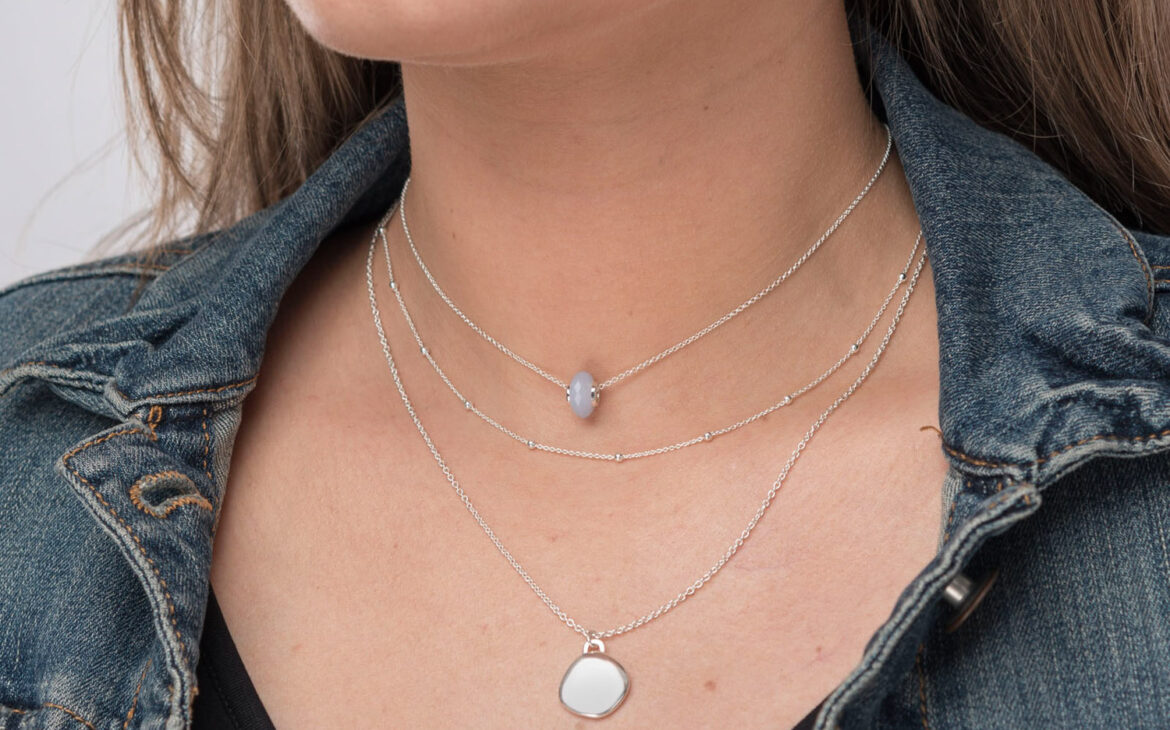In this week’s article we will be elaborating on to create an effective jewellery listings. The key primary step is to select the appropriate platform for your listing. If you specialise in handmade pieces, Etsy is a perfect platform for you. However, Shopify, Amazon & eBay are also good choices for businesses of any size and are easy to set up and manage.
 BY MO STUDIOS
BY MO STUDIOS
Once you’ve chosen where you will be selling you wares, it’s time to display your brand. Every jewellery listing will include your branding. On some sites like eBay, you will not be able to add a banner, but you can put together a logo for your profile picture. Having attractive, high-quality banners and visuals for your page is essential. It helps your potential customers reassure that your brand is memorable, trustworthy and your products are also high-quality.
The about page will include every detail about your business as possible. Finally, tell your customers a bit more about how you operate as a business. This information strengthens that relationship of trust between you and your customer, making them more inclined to purchase from you instead of your competitors.
If your business is smaller or handmade, don’t forget to include personal details like what inspires you or how your business began. Or if your business is more prominent, really focus on those unique selling points like where you source your materials or if the company is family-owned and any physical locations they can visit.
Step one: Consistency
When putting together multiple jewellery listings on a shopping website, you want them to be visually consistent with each other. Using different lighting or angles for different pieces can look unprofessional and clunky. White background packshots work best for initial images as they appear more consistent and focus on the product.
As your potential customers will most often scan the page very quickly, customers will usually ignore any images with busy backgrounds that are harder to see. So keep those lifestyle shots for additional photos or banners on the product page as they are beneficial when utilised correctly.
Step Two: Add Photographs to Jewellery Listings
First impressions are crucial and product photos are the first thing your potential customers will see. Your photos should be of the highest quality that your budget will allow. Photo quality reflects product quality.
Smaller pieces like jewellery are often very very intricate and details, and these elements can often be lost if the photography isn’t of the best quality.
Contacting a professional jewellery photographer can really enhance the quality of your listings and set you apart from the competition. A professional can also assist with the editing process and can avoid hits to your budget that renting/buying equipment and programmes would impact.
Customers on eBay are used to seeing phone camera photos with untidy backgrounds and terrible lighting; using professional images will help your jewellery listings stand out.
Step Three: Additional Images In Your Jewellery Listing
 BY MO STUDIOS
BY MO STUDIOS
When putting a jewellery listing together, include more than one image of your piece. For example, for a jewellery piece such as a necklace focus on the chain and clasp or pick up on the pendant’s beauty.
You can use model and lifestyle images of your jewellery as images as well. They are perfect for showing the relative size of your product. A product’s dimensions can sometimes confuse how the product looks on a person so a visual reference can help some potential buyers. For example, showcasing a necklace on a real model can show how the pendant sits on the person or how long the chain is. When showing earrings on a model, this can show how the jewellery piece part sits or hangs from the ear.
Close-up photos show off gemstones or engravings. It also prevents them from being overlooked.
Step Four: Give Your Jewellery Listings Accurate Descriptions
When listing jewellery, don’t leave anything out of your product description. This is especially important if your jewellery is second hand or vintage. Any details about damage and wear and tear need should be made clear. Avoiding these details can lead to a higher returns rate and damage that buyer relationship. Vintage collectors and buyers want to know what they’re in for when buying second-hand jewellery. There is no harm in including the faults with the jewellery piece. We recommend to show these faults with additional product photos as well as including text.
Bullet-point your descriptions to make it easier to pick out essential information and improve readability. Bullet-point lists should incorporate all of the key information like the measurements, sizing, materials, and unique selling points. USPs could be unique manufacturing processes or how you source your materials.
Need more info on starting your jewellery eCommerce business? Read more here.